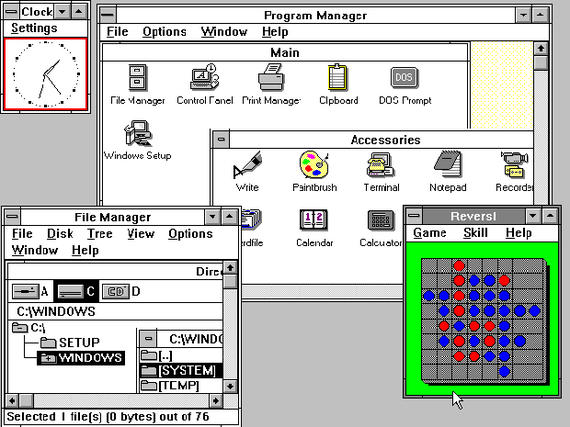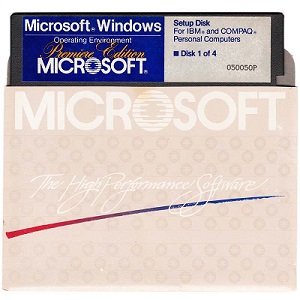Windows was announced by Microsoft Corporation in November 1983 (post−Lisa but pre−Macintosh) and was released two years later in November 1985. Over the subsequent two years, Microsoft Windows 1.0 was followed by several updates to support the international market and to supply drivers for additional video displays and printers.
This version incorporated several changes to the user interface. the foremost significant of those changes involved the utilization of overlapping windows instead of the “tiled” windows found in Windows 1.0. Windows 2.0 also included enhancements to the keyboard and mouse interface, particularly for menus and dialog boxes.
Video Tutorial: Running Windows 1.0 on VirtualBox
Overview of Windows 1.0 ISO
Until this point, Windows required only an Intel 8086 or 8088 microprocessor running in “real mode” to access 1 megabyte (MB) of memory. Windows/386 (released shortly after Windows 2.0) used the “virtual 86” mode of the Intel 386 microprocessor to the window and multitask many DOS programs that directly accessed hardware. For symmetry, Windows 2.1 was renamed Windows/286.

To illustrate the varied techniques of Windows programming, this book has many sample programs. These programs are written in C and use the native Windows APIs. The approach as “classical” Windows programming. it’s how we wrote programs for Windows 1.0 in 1985, and it remains a legitimate way of programming for Windows today.
APIs and Memory Model
Generally, the Windows API has remained quite consistent since Windows 1.0. A Windows programmer with experience in Windows 98 would find the ASCII text file for a Windows 1.0 program very familiar. a method the API has changed has been in enhancements.
Functional Windows Calls
The 16-bit versions of Windows introduce Windows 1.0 and which reportedly ends with Windows 3.1 the MessageBox function located in the link library USER.EXE. The Windows header files included in the Windows 3.1 Software Development Kit along with MessageBox.
Format of Scroll Bar Information
The Windows programming documentation discusses child window controls in two places: First, the simple standard controls that you’ve got seen in countless dialog boxes are described in /Platform SDK/User Interface Services/Controls. These are buttons (including checkboxes and radio buttons), static controls (such as text labels), edit boxes (which allow you to enter and edit lines or multiple lines of text), scroll bars, list boxes, and combo boxes.
With the exception of the combo box, these controls have been around since Windows 1.0. This section of the Windows documentation also includes the rich edit control, which is analogous to the edit box but allows editing formatted text with different fonts and such, and application desktop toolbars.
The most common video adapters used for Windows 1.0 were the IBM Color Graphics Adapter (CGA) and the Hercules Graphics Card (HGC). The HCG was a monochrome device, and therefore the CGA had to be used in a monochrome graphics mode under Windows. The monochrome bitmap remains quite common (for example, mouse cursors are often monochrome), and monochrome bitmaps produce other uses beyond the display of images.

Microsoft Windows supports two metafile formats and two sets of functions to support them. The metafile functions supported since Windows 1.0, and still supported under the present 32−bit versions of Windows, then discuss the “enhanced metafile” developed for the 32−bit versions of Windows. The improved metafiles have several improvements over the old metafile format and should be used whenever possible.
Normally a Windows program should maintain enough information to recreate the contents of its window during the WM_PAINT message. MULTI1 doesn’t do that, but the windows are drawn and erased so rapidly that I didn’t think it necessary.
The prime generator in WndProc2 isn’t terribly efficient, but it works. variety is prime if it’s no divisors except 1 and itself. to see if a specific number is prime, however, it doesn’t require dividing by all numbers and checking for remainders up thereto number being checked, but only up to the root of that number. That root calculation is that the reason for the weird introduction of floating−point math in an otherwise all integer−based program.
There is nothing really wrong with the MULTI1 program. Using the Windows timer is a fine way to simulate multitasking in earlier and current versions of Windows and Windows 98. However, the use of the timer sometimes restricts the speed of a program. If the program can update all its windows within one WM_TIMER message with time to spare, then it isn’t taking full advantage of the machine.
System Requirements of Windows 1.0 ISO and Virtual Machine Image
The following are a few requirements that window 1.0 ISO asks for to operate flexibly with no interruptions.
- Require memory 1MB RAM
- Require Hard Drive 50 MB
- Require OS: MS-DOS version
Download Windows 1.0 ISO and Virtual Machine Image Full Version
You can download the Windows 1.0 ISO and Virtual Machine Image full version by accessing the link below. Also, make sure that you have enough back up before you proceed with the same. There are a lot of duplicate ISO images on the market and it is best to download the same from a trusted source.






We have updated our post, sorry for the delay!